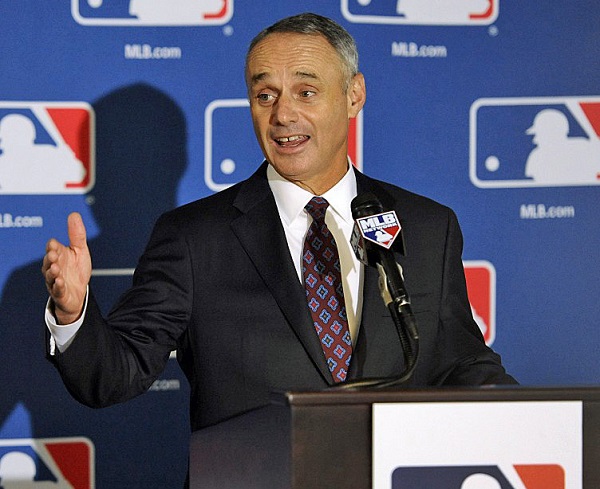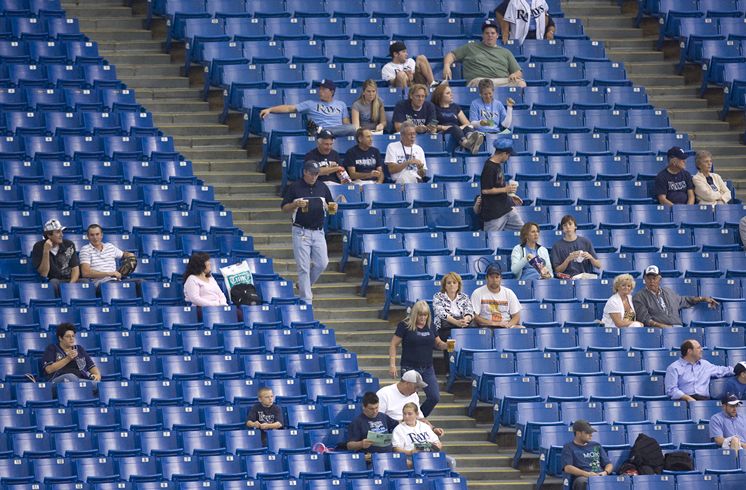I was very interested to see who was going to be chosen as the new commissioner of baseball. It doesn’t happen that often and it is a great indication of where the owners’ think baseball is going. The choice of Rob Manfred speaks volumes. When you promote from within for the most part, you want to stay the course. As a lawyer with a labor background and also the right hand man of Bud Selig, it is pretty clear that the owners think that baseball should continue on its current path and avoid labor pitfalls. Why not? Baseball is more profitable than ever.
Here’s my shocking quote directed to the new commissioner (get ready, brace yourself): “Major League Baseball is in the process of dying.” Yes. I said it. On its current path, the “grand old game” literally has one foot in the coffin at its most profitable moment. How can that be? Hasn’t baseball’s revenue more than doubled in the past 11 years to $8 billion? Money flowing to all coffers? Well, yes it is all good for now but . . . (cue the ominous music and entering storm clouds)

Whether he realizes it or not, MLB commissioner elect Rob Manfred definitely has his work cut out for him. (Photo credit – Steve Ruark)
The Grand “Old” Game
One of the great things about baseball is that it is handed down through generations. Your father played catch with you and you are doing the same with your son or daughter. You are a fan because your father took you to the stadium and he was a fan because his father brought him. That is how it has worked for generations. It is the “great circle of life” (yes, I am forced to watch too many Disney movies). But something is not working. That century-old generational chain is being broken at the height of the most profitable moment in baseball history.

You don’t have to drive very far these days to see an empty Little League field. It seems kids today prefer Xbox and PlayStation over a baseball, bat and glove.
(Image courtesy of uncutdiamond.wordpress.com)
TV deals are one of the most important financial elements to a modern sports franchise to which any team can attest. It is not only the goal to put “butts” in the stadium seats but to put them in front of the TV, computer, tablet or smartphone as well. According to Nielsen’s 2013 “Year in Sport Media Report” half of the baseball viewership is 55 years or older. That amount is up 14% from just ten years ago. On the other end of the scale, only 7% of 2-17 year olds watch baseball (is someone really monitoring a 2-year-old’s viewership of baseball?) and only 24% of viewers are below 35 years old. This is not a solid sign of sustainable success.

You have to wonder how major league baseball franchises can stay in business when they routinely draw crowds like this. (Photo credit – James Borchuck)
What the data appears to suggest is that older viewers are staying faithful while younger viewers aren’t – hence the calls to make the game quicker for the attention-deficit crowd or make it flashier like the NBA or the NFL. Or is that really what is going on? Around 83% of baseball viewers are white. In 2012 for the first time in history the number of deaths outnumber births in the white population according to the US Census. This double-edged trend has been going on for quite a while. The birthrate in the white community has been on a downward spiral while the median age increases. This makes sense. Maybe there haven’t been as many kids to bring to the ballpark! The problem is this: unless the MLB invests in massive cryogenic chambers to extend the life of its major fan base, baseball’s current level of growth, profitability, and general good times cannot continue without new fans from other “minority” groups (yes, the quotes are there on purpose).
“Viva Los (Insert Team Name)”
Another long-term trend according to Nielsen that is not favorable for baseball is the overall percentage of Hispanic viewers. As of 2013 according to Nielsen, Hispanic viewership was a paltry 9%. This is a lower percentage than the MLS, NBA and NFL. If it weren’t for golf and hockey baseball would be last.
Even though the word “Hispanic” or “Latino” is often used in the demographic vernacular, there should be more specificity when it comes to talking about the US population. While Hispanics are the fastest growing minority in the US, what we are really talking about is the Mexican-American population. Mexican-Americans make up about 60 to 70% of the US Hispanic population in general and up to 80% of the Hispanic population in many major urban areas and in states like California, Arizona, and Texas.
In many major US markets, around 50% of the younger demographic (34 and younger) will be of Mexican ancestry in the very next decade. This is an earth-shaking trend and there is no quick fix for baseball. This issue should be stealing sleep from franchise owners in major US markets such as Houston, Dallas, Oakland, Los Angeles, Miami, San Diego, Phoenix, Denver, San Francisco, and Chicago among others. If you are not prepared as a sports franchise to captivate and entertain this audience, you are going to have a hard time maintaining growth as well as the value of your franchise.
The changing face of America is no longer a scenario of what may happen but what has already been happening for decades, yet MLB seems slow to react. Whether you are peddling politics, products or services, if you don’t have a plan to influence the Mexican-American population you will suffer in the very near future. Baseball should be out in front of this trend. Hispanics are now the largest minority in Arizona, California, Colorado, Connecticut, Florida, Idaho, Illinois, Iowa, Kansas, Massachusetts, Nebraska, Nevada, New Hampshire, New Jersey, New Mexico, Oregon, Rhode Island, Texas, Utah, Washington and Wyoming. There is no sign that this trend is slowing down. To the contrary, within the next decade it is projected that upwards of 30% of the entire US population will be Hispanic – mostly of Mexican ancestry.
So you are watching a movie, a big boulder is rolling down the canyon, the protagonist doesn’t know it is coming and yet no one in the theater screams “Hey, look out!” In the marketing world, these are OVERWHELMING numbers. The demographic trends are irrefutable and massive in scale. Baseball has become older and the generational interlocking that has supported baseball over the past century has been broken because of declining birthrates in the white population. Why isn’t this THE big issue that everyone is talking about when discussing the future of baseball? There is no doubt where the MLB should be focusing its resources – get the Mexican-American fan base engaged. How do you get the big MLB dinosaur to move in the right direction? Commissioner Manfred, free unsolicited advice coming up!




 August 29th, 2014 at 2:18 pm
August 29th, 2014 at 2:18 pm  by Robb Anderson
by Robb Anderson  Posted in
Posted in 

Interesting perspective that makes one think. Not sure I completely agree but I would agree that baseball needs to learn how to appeal more to the youth of this country.
Hey, MFGRREP. Please explain where you feel there is a hole in my reasoning. This is a part of bigger of a proposal that I am presenting to a group here in Mexico. Would appreciate the feedback.
A very interesting perspective, Robb. Those demographic numbers are truly amazing. I had no idea the decline among younger fans was that drastic. I see a lot of 18-30 year-olds at Dodger Stadium every night and many of them are Hispanic, although I don’t know what percentage are Mexican.
I have long felt that video games is/are the culprit(s) that keeps kids indoors and in front of computer screens for hours every day instead of them being outdoors shagging flies. Even though my son is one of those video game addicts, at least he goes to quite a few games with me, for which I am grateful (more than he’ll ever know). He is very much into the strategies of the game and he loves to keep score.
Thanks for the article!
The Dodgers are one of the few franchises that are on the right side of the demographic trend and the exception to the rule. They have enjoyed the lasting effect of Fernando Valenzuela, who pulled in more new fans than any other player in modern baseball history. Those who were kids during that era were introduced to the Dodgers by their fathers and experienced Fernando-mania. They are now bringing their kids. Multi-generational fans. The Dodgers are an example of how this should work.
Back in the saddle, @Think_BlueLA! New series of essays on @mlb ‘s impending demographic doom http://t.co/J3xNnowpsq @keithlaw @jphoornstra
Saludos @FRomeroAstros Mi nuevo articulo sobre problemas demograficos que tiene @mlb sin poblacion Mexicana-Americana http://t.co/J3xNnowpsq
ICYMI – Baseball’s Impending Doom – http://t.co/hSPcgbKkQa
@markasaxon latest essay on baseball’s impending demographic doom on @Think_BlueLA http://t.co/J3xNnowpsq